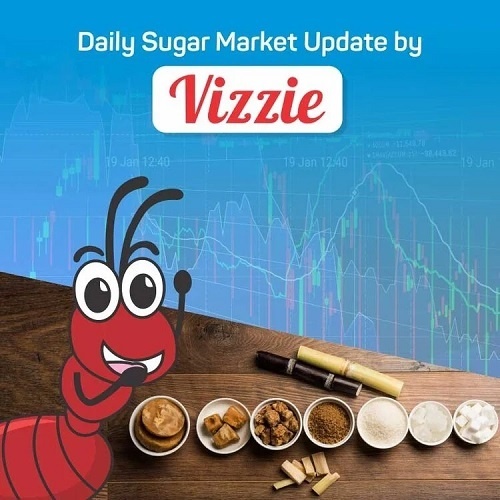ChiniMandi, Mumbai: 17th June 2024
Domestic Market
Sugar prices continue to remain stable
For the third session, domestic sugar prices are said to be stable in the main markets. Demand was reported to be low today, with the majority of traders/retailers covering for the festive in the previous week. Meanwhile, the Indian monsoon has been stuck over North Maharashtra for the past 6-7 days due to unfavorable conditions for continued advancement. However, the monsoon has covered the majority of the cane-growing regions, and good rains are expected in these areas, which should help to revive cane production.
M-grade sugar in Muzaffarnagar costs between Rs 3,840 and Rs 3,860 per quintal, whereas S-grade sugar in Kolhapur costs between Rs 3,580 and Rs 3,620. According to Agrimandi, the cost of S grade sugar in the Kolhapur market is expected to fall between Rs 3,540 and Rs 3,660 per quintal over the next two weeks.
Ex-mill Sugar Prices as on June, 17 2024 :
|
State |
S/30 [Rates per Quintal] |
M/30 [Rates per Quintal] |
|
Maharashtra |
₹3590 to 3630 |
₹3670 to 3710 |
|
Karnataka |
₹3760 to 3775 |
– |
|
Uttar Pradesh |
|
₹3840 to 3860 |
|
Gujarat |
₹3631 to 3651 |
₹3731 to 3751 |
|
Tamil Nadu |
₹3790 to 3900 |
₹3870 to 4000 |
|
Madhya Pradesh |
₹3720 to 3780 |
₹3750 to 3800 |
|
Punjab |
₹3975 to 4060 |
|
|
(All the above rates are excluding GST) |
||
Destination-wise Spot Prices as on June, 17 2024 :
|
City |
Grade |
Rate |
|
Delhi |
M/30 |
₹4,084.50 |
|
Kanpur |
M/30 |
₹4,047.75 |
|
Kolhapur |
M/30 |
₹3,885.00 |
|
Kolkata |
M/30 |
₹4,105.50 |
|
Muzaffarnagar |
M/30 |
₹4,042.50 |
International Market
At the time of writing this update London White Sugar #5 front month contract is trading at $548.40 ton, whereas the New York Sugar #11 front month contract is trading at 18.90 c/lb.
News Round-Up
Global sugar market to record 5.5 million metric tonnes surplus in upcoming season: Czarnikow
E20 available at 14,611 PSU outlets till June 1; India on track to achieve 20% blending target by 2025
















